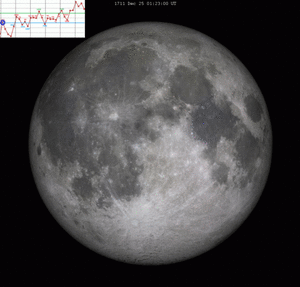Metonic cycle facts for kids


The Metonic cycle is a period of about 19 years used in astronomy and calendar studies. In particular, it is often used in the structure of lunisolar calendars, because 19 solar years is almost exactly the same length of time as 235 lunar months.
History
The Metonic cycle is named for the astronomer Meton of Athens, who used the cycle in the calendar of Attica in the 5th century BCE. But it was used in the calendar of many ancient cultures, including Babylonia and China, before then.
Using the Metonic cycle in a calendar
Nineteen years of 12 lunar months each would last a total of 19 × 12 = 228 lunar months. But from astronomy we know that 19 solar years are the same length as 235 lunar months. So over 19 years, 235 – 228 = 7 extra lunar months need to be added to make the years line up correctly. Adding a thirteenth month in a year is called intercalation. There are different ways to do it:
- The ancient Babylonian calendar and the modern Hebrew (Jewish) calendar add an extra month just before the spring equinox on a regular schedule of years: years 3, 6, 8, 11, 14, 17 and 19 of each 19-year cycle
- The modern Chinese calendar, and other Asian calendars that follow it, use a calculation of solar periods and moon phases to decide when to add the extra month
- Other cultures use observation—for example, seeing if a crop is ripe—to decide when to add an extra month. The calculation of the date of Easter uses the astronomical observation of the spring equinox to determine whether the following Easter will come 12 or 13 lunar months after the last one.
Metonic cycle and eclipses
A Metonic cycle is close to the length of 20 eclipse years. For that reason, some eclipses repeat for a time at 19-year intervals.
See also
 In Spanish: Ciclo metónico para niños
In Spanish: Ciclo metónico para niños

